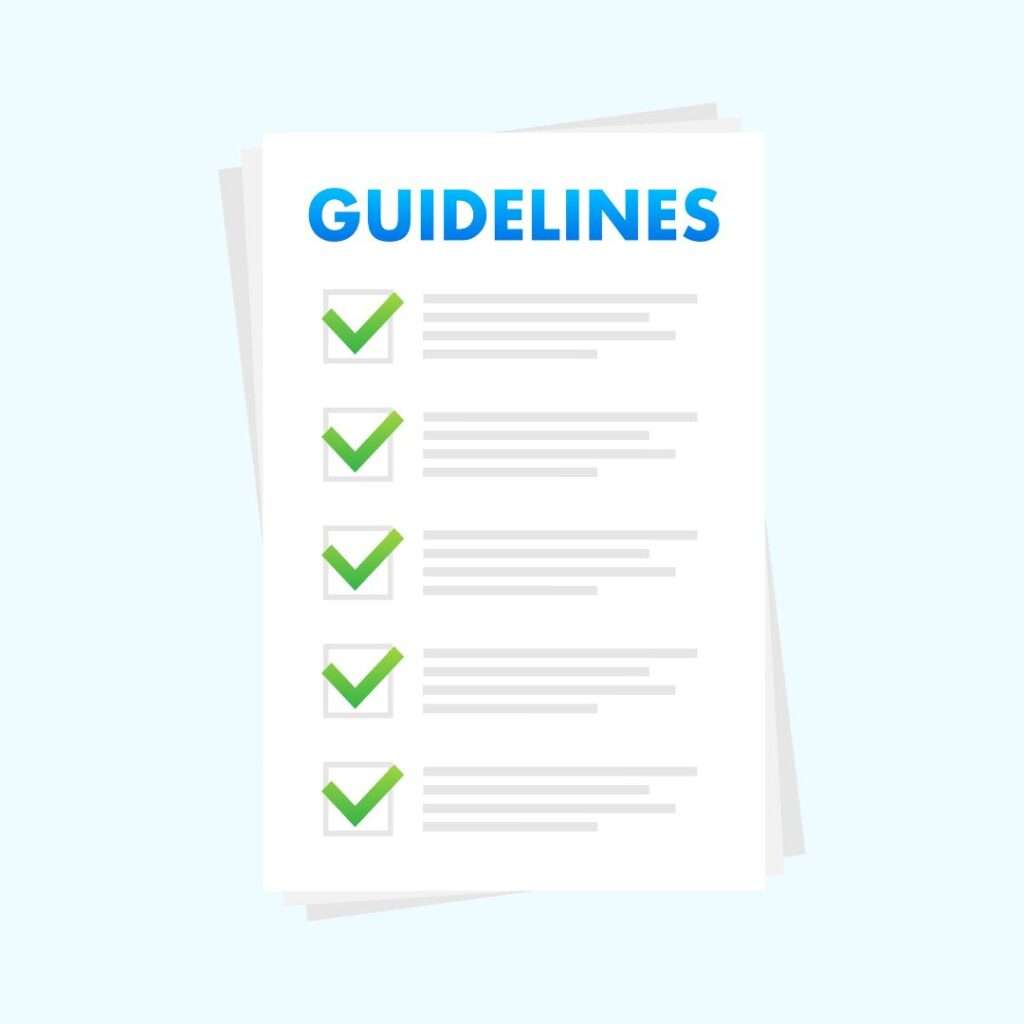Table of Contents
- Introduction
- The Need for the Guidelines for Ethical Publishing
- Foundations of Ethical Publishing
- Guidelines for Authors
- Responsibilities of Reviewers and Editors
- Navigating Ethical Challenges in Academic Publishing
- Conclusion
Introduction
The write-up outlines guidelines for ethical publishing. Ethical publishing refers to the responsible dissemination of scholarly work following established guidelines and principles of integrity. This includes appropriately attributing sources, disclosing conflicts of interest, obtaining permissions, and upholding rigorous standards at all stages of the research and publication process.
Responsible scholarship is the foundation of ethical publishing practices. When researchers adhere to ethical principles and professional guidelines, it promotes trust in the scholarly record and enables the effective dissemination of knowledge. Unethical practices like plagiarism, data fabrication, and authorship abuse undermine integrity and reliability. By contrast, responsible research and publication practices facilitate productive discourse and advance discovery.
The Need for the Guidelines for Ethical Publishing
Academic publishing is the process through which scholars and researchers share their findings with the academic community and the public. It typically involves disseminating peer-reviewed journal articles, books, and conference papers. The primary goals of academic publishing are to advance knowledge within a field, provide a forum for scholarly communication, and contribute to academic discourse.
The need for guidelines for ethical publishing arises from the necessity to maintain trust in the academic record. Ethical publishing ensures that credit is given where it’s due, conflicts of interest are disclosed, and research is presented accurately and transparently. This is crucial because the academic community relies on published work to build upon previous research, develop new theories, and apply findings in practical settings. If the integrity of academic publishing is compromised, it can lead to misinformation, tarnished reputations, and a general mistrust in scholarly work.
Unethical practices in publishing, such as plagiarism, data falsification or fabrication, and inappropriate authorship credit, can severely damage the scientific endeavor. These malpractices can lead to the retraction of papers, loss of credibility for authors and institutions, and even harm to the public when policy or medical treatments are based on faulty research.
Guidelines for ethical publishing are designed to prevent such issues by setting clear expectations for behavior in the publication process. They cover a wide range of topics, including but not limited to:
- Authorship: Ensuring that all contributors who have made a significant intellectual contribution to the work are given credit as authors.
- Plagiarism: Avoiding the use of others’ work without proper citation and acknowledgment.
- Data integrity: Presenting data honestly without manipulation and providing access to data when applicable.
- Peer review: Engaging in constructive and unbiased evaluation of others’ work.
- Conflict of interest: Disclosing any financial or personal relationships that could influence the research or its interpretation.
- Redundant publication: refraining from submitting the same or substantially similar work to more than one journal or publisher.
These guidelines serve as a framework to ensure that the publication process is fair, transparent, and accountable, which, in turn, preserves the integrity of the academic record and fosters a healthy and productive scholarly environment.
Ethical codes and guidelines establish shared expectations for best practices and responsibilities. They provide standards for authors regarding originality, attribution, transparency, and accuracy. For reviewers and editors, they stress impartiality, constructive feedback, and confidentiality.
Guidelines for ethical publishing remind publishers of their role as stewards of scholarly integrity through policies on image manipulation, conflicts of interest, authorship, and more. By providing ethical guidance tailored to different stakeholders, these guidelines sustain credibility and high standards across academic publishing.
Foundations of Ethical Publishing
Ethical publishing is built on integrity, transparency, and respect for intellectual property. These principles uphold the credibility and trustworthiness of scholarly work. Authors who adhere to the guidelines for ethical publishing show regard for the accuracy of their research and take responsibility for adequately attributing sources. Reviewers and editors also play a vital role through unbiased, constructive feedback that maintains publishing standards.
Integrity as the Cornerstone
Integrity serves as the cornerstone of ethical publishing practices. Authors demonstrate integrity by reporting findings honestly, disclosing potential conflicts of interest, and ensuring data collection, analysis, and reporting accuracy. Even in the face of pressures to publish quickly or achieve positive results, adhering to ethical standards maintains the legitimacy of scholarly work.
The Role of Transparency
Transparency involves communicating research methodology and data sources so others can replicate or validate findings. Providing access to data, disclosing funding sources, and elucidating analytical processes uphold transparency. Fostering openness allows scholars to build on previous work and advances collective knowledge. Lack of transparency undermines trust in research.
Respecting Intellectual Property
Properly attributing the ideas and work of others demonstrates respect for intellectual property. Ethical publishing requires obtaining permission to reproduce copyrighted figures or tables before publication. Verbatim text from other sources must appear in quotes with complete citations. Authors should credit sources with in-text citations, even when paraphrasing or summarizing concepts. Failure to do so constitutes plagiarism.
Guidelines for Authors
Ethical publishing begins with the author. Authors uphold integrity in research and publication as creators and disseminators of scholarly work. This section outlines critical guidelines for authors to ensure their work meets expected ethical standards.
Accurate Reporting and Disclosure
Authors should strive for accuracy and transparency when reporting data, methods, results, and conclusions. All relevant information should be disclosed, including complete details on research design, data collection and exclusions, statistical analyses, funding sources, and potential conflicts of interest.
Being truthful and providing appropriate context allows readers to assess the reliability and importance of the research fairly. Omitting details or misrepresenting findings damages credibility, alleviating the need to comply with the guidelines for ethical publishing.
Proper Citation and Attribution
Using and acknowledging the ideas and work of others appropriately is a central ethical requirement. Authors must properly cite sources within the text and reference list to give credit for existing knowledge used to inform their research and writing.
Quotations should be marked, with page numbers provided. Paraphrasing also requires a citation to the source. Failing to attribute work correctly constitutes plagiarism.
Seeking Permission for Copyrighted Material
Reproducing material from copyrighted sources requires obtaining permission from the copyright holder. Tables, figures, images, extended quotations, and other protected materials should not be used without documented consent.
Permissions should be secured before publication. Infringing on intellectual property rights can result in legal consequences.
Responsibilities of Reviewers and Editors
Peer reviewers and editors play a crucial role in upholding the integrity of scholarly publications. As gatekeepers of academic research, they have an ethical responsibility to ensure that only high-quality, original work gets published after undergoing rigorous evaluation.
Importance of Unbiased Evaluation
Reviewers must provide an objective assessment of the manuscript under review. Personal biases, conflicts of interest, or intellectual biases should not cloud their judgment. Reviewers must judge the work solely based on academic merit and contribution to the field, irrespective of factors like the author’s identity, gender, affiliation, or nationality.
Confidentiality
Reviewers must maintain complete confidentiality and not disclose details of the manuscript or their review to anyone. This allows authors to share work comfortably in the early stages without fear of plagiarism. Breaching confidentiality severely undermines the peer review process.
Constructive Feedback
While critique is necessary, reviewers must provide feedback in a collegial manner, avoiding hostile language. Feedback should objectively highlight strengths and weaknesses, offer specific suggestions for improvement, and recognize efforts made by authors. This facilitates learning and growth.
Preventing Conflicts of Interest
Editors must screen submissions to ensure no conflicts of interest between authors, editors, or reviewers. Reviewers must recuse themselves if they have any financial, personal, or professional relationships with the authors that could bias judgment. Failing to declare conflicts violates publication ethics.
Maintaining Objectivity
Editors must base decisions solely on the quality of work, not on potentially influencing factors like controversial findings or authors’ lack of experience. Objective criteria must guide decisions to accept or reject. This upholds standards and fairness in scholarly publishing.
Navigating Ethical Challenges in Academic Publishing
Academic publishing is filled with potential ethical pitfalls. From data fabrication to redundant publications, scholars must carefully navigate tricky situations that lack straightforward right or wrong answers. By exploring common dilemmas through case studies, we can better illustrate the nuances of ethical decision-making.
Addressing Common Ethical Dilemmas
Several ethical issues frequently arise:
- Dual submissions – when authors submit the same manuscript simultaneously to multiple publications.
- Redundant publications – when authors republish previous work without proper attribution or permission.
- Data fabrication or falsification – when research data is fabricated or manipulated.
These practices undermine integrity in research and should be avoided. Yet real-world situations are often complex, with competing pressures making choices less straightforward.
Exploring Case Studies
Consider this scenario:
Dr. Josephine Smith submits a paper to Journal A. After months without a decision, she withdrew it and submitted it to Journal B on a colleague’s recommendation. The paper is accepted. Soon after, Journal A accepts the original submission. Dr. Lee now faces an ethical dilemma – how to handle two acceptances of the same paper.

This case highlights the nuances around dual submissions. Rather than rash judgments, we need thoughtful analysis of the motivations and constraints guiding Dr. Lee’s actions. Dialogue and mentorship can help scholars like her navigate such quandaries.
Seeking Guidance
When facing unclear ethical territory, seeking counsel from mentors, colleagues, or research integrity offices is best. Useful resources include:
- The Committee on Publication Ethics (COPE) – provides ethical guidelines for all parties involved in academic publishing.
- Office of Research Integrity (ORI) offers extensive resources on responsible research conduct in the US.
- UK Research Integrity Office (UKRIO) – leads efforts to promote research integrity in the UK.
By consulting such guidance and recognizing shades of gray in ethics, scholars can uphold integrity despite publishing’s challenges.
Conclusion
Guidelines for ethical publishing are vital for upholding integrity in academic research and scholarly communication. As discussed, authors, reviewers, editors, and publishers are all responsible for adhering to ethical guidelines that promote transparency, objectivity, and respect for intellectual property.
Some key takeaways include:
- Authors should accurately report data, properly cite sources, disclose conflicts of interest, and ensure appropriate authorship.
- Reviewers and editors should provide unbiased and constructive feedback, maintain confidentiality, and avoid conflicts of interest that could undermine objective decision-making.
- Publishers should enforce clear policies on ethical publishing and address issues like plagiarism, data fabrication, redundant publication, etc.
By integrating these ethical considerations into research and publishing endeavors, scholars can cultivate a culture of integrity in academic communication. This not only upholds credibility but also responsibly advances knowledge.
Continuing engagement in developing guidelines for ethical publishing and raising awareness about responsible research conduct is crucial. This includes ongoing discussions, workshops, and training sessions on ethics in publishing. It also promotes open dialogue among researchers, editors, and publishers to address emerging ethical challenges and dilemmas.
Ultimately, the commitment to ethical publishing lies with all stakeholders in the academic community. By fostering a culture that values integrity, transparency, and accountability, we can ensure that scholarly communication remains a trusted source of knowledge and innovation.

1 thought on “Guidelines for Ethical Publishing”